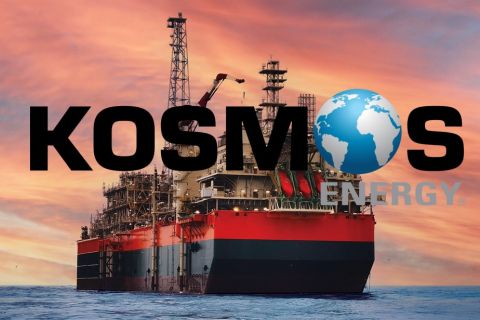Plumbing the ocean depths for oil was a pipe dream until recently. But important advances in the industry’s automation capabilities, as well as control, power, and safety solutions, are making the concept of subsea production a viable option.
More oil companies around the world are interested in the potential of subsea fields to increase recovery rates and improve access to challenging fields. As a result, subsea power transmission and distribution is emerging as a mature technology.
Singular challenges
Moving processing from shore to deep sea requires equipment and technologies that can accommodate a high-pressure environment with more shock and vibrations. Unique voltage requirements and transmission challenges also come with the territory.
Placing equipment under water involves unique electrical technology, such as a boosting and separating system, water injectors and transformers, power cables, connectors, and penetrators to power these units. These complex components operate in uniquely challenging environments, putting them at risk for failure. Maintaining successful production requires the expertise of an automation technology partner with deep knowledge of the offshore industry as well as significant capabilities in subsea automation, critical control, and safety applications.
Limiting risk, boosting reliability
Risk is inherent in any operation, but subsea initiatives by their nature require special commitment to in-depth assessment and preventive planning. Put simply, the surest way to reduce risk is by improving reliability.
Preventive measures should begin with careful site selection and include these best practices to achieve performance reliability:
- System design optimization;
- Modeling and testing;
- De-rating; and
- System and component redundancy.

Subsea initiatives require special commitment to in-depth assessment and preventive planning. (Images courtesy of Rock-well Automation
System design optimization
Reliable system design hinges on the number and complexity of the system’s components and connections: the fewer components and connections, the fewer opportunities for failure.
The system mean time between failures (MTBF) is a product of the MTBF of each component and all the associated connections – and every electrical and mechanical component has the potential for manufacturing defects, handling damage, or design flaws.
Mechanical connections are candidates for incorrect installation, and their connections will likely involve high-voltage connectors, penetrators, and jumper systems, all posing a heightened risk of failure from high pressure. Reducing the number of system components reduces the number of required connections and limits the opportunity for failure.
Modeling and testing
Modeling of normal and abnormal operating conditions is another step, or series of steps, vital to reducing risk. It should include failure mode effect analysis (FMEA), which will allow the designer to simulate many potential scenarios, achieve adequate margins, and develop contingency plans for foreseeable situations.
A great deal of FMEA data exists on equipment such as connectors and penetrators. For components that lack a track record, reliability can be accurately calculated using dummy connectors with fixed resistors between phases.
Modeling can be implemented later, during testing, and should be performed on prototypes to verify the design accuracy for the intended application.
If a good correlation exists between modeling and testing, operators can pursue the final design application with greater confidence.
De-rating for reliability and longevity

Redundancy ensures that the loss of a single device will not impact production, improving the probability of uninterrupted operation.
It is a common practice to improve reliability by de-rating components to minimize stress and provide an operational margin for unforeseen events. De-rating is a way of underutilizing electrical components to improve reliability and extend equipment life.
Reducing the manufacturer’s maximum operating parameters by a de-rating factor is a strategy to operate components below their specific capabilities. It effectively reduces thermal stress and other wear factors to improve equipment reliability and longevity. While de-rating cannot be done on connections, electrical system components are often de-rated on the basis of temperature, voltage, or current to address transients or overload and surge conditions.
Redundancy multiplies reliability
Redundancy in system design – adding excess capacity in the form of added control elements – is another effective method for improving reliability. Although it negatively impacts MTBF, redundancy helps to ensure that the loss of a single device will not impact production, improving the probability of uninterrupted operation.
Redundancy is a strategy that can be used from the subcomponent level to the system level itself, and it can be considered part of the system margin. It is easy to justify redundancy in critical and costly subsea applications, but devices must be tested on a regular basis to help ensure functionality for future use.
Deployment and enclosure requirements
From equipment placement to the choice of an enclosure package, the requirements of subsea deployment are a dramatic departure from surface applications.
Placing subsea processing and power equipment requires the use of large-capacity ships. Most of these vessels have handling capacities of about 50 tons, effectively making this the natural design limit for the overall package. These specialized ships are not readily available and can require months of lead time for deployment or equipment retrieval.
The choice of enclosure package also must be guided by the rigors of the subsea environment. One option is a thin-wall enclosure that is filled with oil. In this approach, the external pressure determined by the operating depth is transferred to the enclosed component, requiring that the internal components be compatible with the compensating oil used.
The other option is a one-atmosphere enclosure. This is a problematic alternative since it requires thicker walls, which can be heavy, costly, and impractical for subsea applications. The best enclosure choice might be a combination of the two options: a vertical design that makes the units more cylindrical in shape and better able to withstand deep-sea pressure. The vertical design also makes more usable volume accessible.
New transmission approaches
The need to reliably transmit power across greater distances and depths is driving innovations in power strategies and cable design. As pressure and flow control become critical in this environment, process control and the use of adjustable speed drives will be key in optimizing subsea production. Several initiatives using adjustable speed drives are currently under development.
Higher currents in subsea applications are another innovation driver. Step-outs of 20 km to 30 km (13 miles to 18 miles) are typical for Ormen Lange, an end-user facility working to supply power from onshore to a subsea installation that spans more than 125 km (76 miles) and one of the longest current designs. Voltage drop is common and problematic when transmitting power at these great distances. The solution lies in new subsea electrical components, systems, and technology, including high-voltage DC transmission approaches.
Another new entry in the subsea field is the current source inverter. This emerging drive topology is well-suited to the long cable lengths involved in subsea applications.
These innovative power strategies have the ability to control and optimize flow while eliminating valves and the ongoing maintenance required by mechanical control components.
Recommended Reading
Some Payne, But Mostly Gain for H&P in Q4 2023
2024-01-31 - Helmerich & Payne’s revenue grew internationally and in North America but declined in the Gulf of Mexico compared to the previous quarter.
Uinta Basin: 50% More Oil for Twice the Proppant
2024-03-06 - The higher-intensity completions are costing an average of 35% fewer dollars spent per barrel of oil equivalent of output, Crescent Energy told investors and analysts on March 5.
In Shooting for the Stars, Kosmos’ Production Soars
2024-02-28 - Kosmos Energy’s fourth quarter continued the operational success seen in its third quarter earnings 2023 report.
M4E Lithium Closes Funding for Brazilian Lithium Exploration
2024-03-15 - M4E’s financing package includes an equity investment, a royalty purchase and an option for a strategic offtake agreement.
California Resources Corp. Nominates Christian Kendall to Board of Directors
2024-03-21 - California Resources Corp. has nominated Christian Kendall, former president and CEO of Denbury, to serve on its board.





